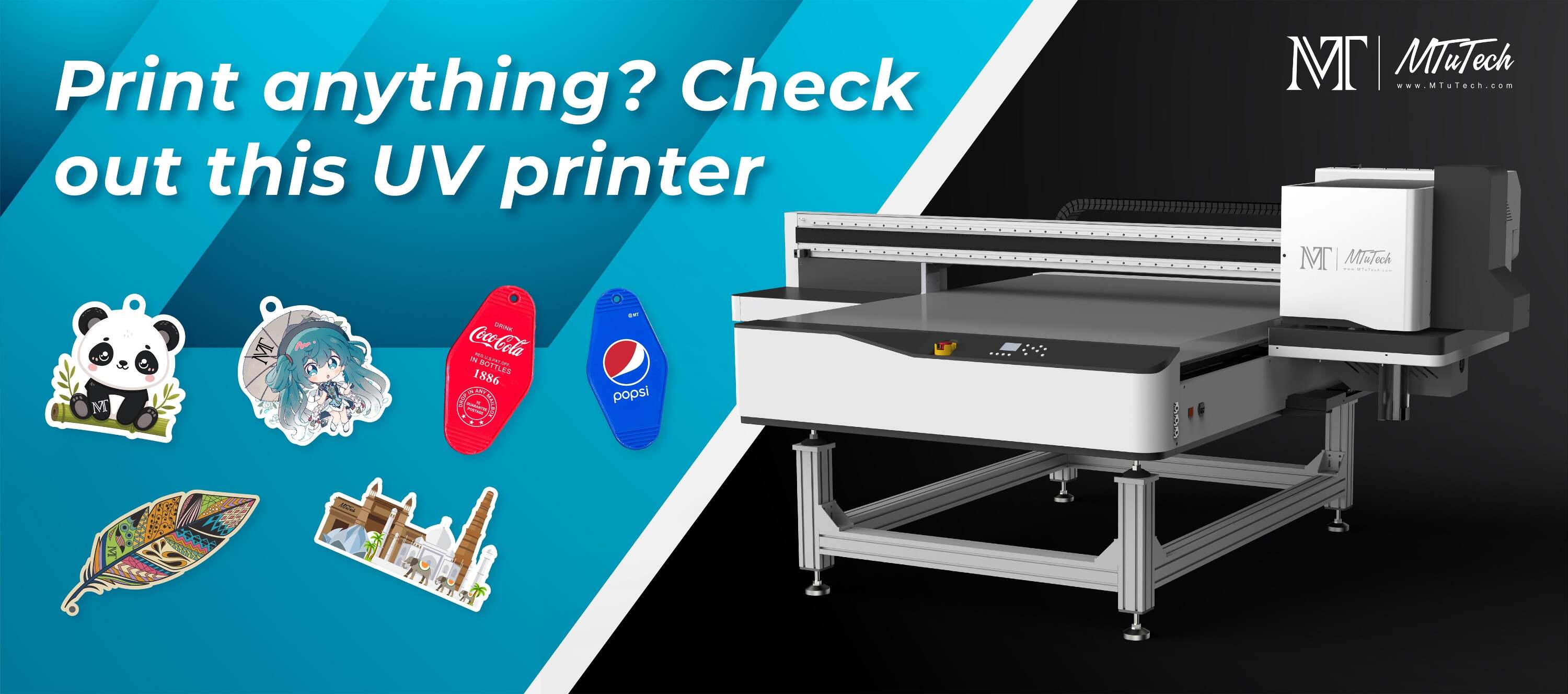Visual Positioning in Dual-Head UV Printers – Challenges and Solutions
Introduction
As the printing industry continually evolves, dual-head UV printers have gained significant traction for their efficiency and quality. Among the most notable features of these systems is visual positioning, a technology that ensures precise alignment of images and designs. However, visual positioning also introduces specific challenges that must be addressed. In this blog post, we'll delve into these challenges and propose practical solutions to optimize the performance of dual-head UV printers.
Understanding Visual Positioning
Visual positioning refers to the method of aligning print designs with high precision using advanced sensors and cameras. This technology enables printers to achieve remarkable accuracy, reducing waste and enhancing the quality of print outputs. Dual-head UV printers benefit immensely from this feature, as they often deal with varied substrates and complex designs.
The Importance of Visual Positioning in Dual-Head UV Printers
Visual positioning is essential in dual-head UV printers for several reasons:
·
Increased Precision: It minimizes misalignments, ensuring that designs are accurately printed.
·
·
Reduced Waste: Correct positioning reduces the number of misprints, saving materials and costs.
·
·
Enhanced Productivity: Faster setups lead to shorter production times.
·
·
Improved Print Quality: Consistent quality is maintained throughout print runs.
·
Challenges of Visual Positioning in Dual-Head UV Printers
Despite its advantages, visual positioning can present several challenges:
1. Calibration Issues
Calibration is crucial for visual positioning. If the sensors are not properly calibrated, the alignment can be skewed, leading to print errors. Regular maintenance and recalibration are necessary to ensure optimal performance.
2. Variation in Substrates
Diverse substrates can affect the accuracy of visual positioning. Materials may warp, bend, or have inconsistent surfaces, complicating the alignment process. Operators need to be knowledgeable about the specific attributes of each substrate type.
3. Environmental Factors
Lighting and temperature fluctuations in the production environment can impact the sensors' ability to accurately read positions. Consistency is vital to maintain alignment precision.
4. Complexity of Designs
Highly intricate designs that involve multiple colors or patterns may pose challenges during visual alignment. The more complex the design, the higher the likelihood of misalignment, requiring sophisticated calibration settings.
5. System Interdependencies
The integration of visual positioning systems within dual-head printers can lead to challenges in compatibility with existing software or hardware. Ensuring that all components work harmoniously is essential for reliable operation.
Solutions to Overcome Visual Positioning Challenges
To effectively tackle the challenges associated with visual positioning, consider the following solutions:
1. Regular Calibration and Maintenance
Establish a maintenance schedule that includes regular calibration of sensors to ensure the accuracy of visual positioning. Routine checks can reduce the risk of misalignment and improve overall print quality.
2. Understanding Substrate Characteristics
Operators should undergo training to understand the differences among various substrates. This knowledge enables them to adjust settings proactively and minimize alignment issues associated with specific materials.
3. Environmental Control
Implement measures to control lighting and temperature in the printing environment. Utilizing consistent, adjustable lighting can help ensure that visual sensors read positions accurately.
4. Advanced Software Solutions
Utilize software that is designed to handle complex designs effectively. Advanced graphical software can assist in calculating precise alignment, even for intricate print jobs, reducing the risk of misprints.
5. Continuous System Updates
Regularly update software and firmware to ensure compatibility and optimize performance. Keeping systems updated can solve many unforeseen issues related to hardware and software integration.
Case Study: Improving Visual Positioning in Dual-Head UV Printers
A successful printing company faced issues with visual positioning that led to high waste levels and decreased productivity. By implementing a structured approach to calibration and training, along with enhanced environmental controls, the company significantly reduced misprints and improved operational efficiency. The integration of advanced software tailored to their unique print designs furthered their success, showcasing the positive impact of addressing visual positioning challenges.
Conclusion
Visual positioning is a vital component in maximizing the performance of dual-head UV printers. By understanding the associated challenges and implementing strategic solutions, print operators can enhance print accuracy, reduce waste, and achieve better productivity. Investing in technology and training, as well as adopting preventive measures, can lead to transformative outcomes in the printing process. For those looking to leverage the power of visual positioning, explore our high-quality Visual Positioning UV printers here and witness the benefits firsthand.
FAQ
What is visual positioning in dual-head UV printers?
Visual positioning is a technology used to ensure precise alignment of images and designs during the printing process. It utilizes sensors and cameras to enhance accuracy and reduce misalignment.
What are the main challenges of visual positioning?
The primary challenges include calibration issues, variation in substrates, environmental factors, complexity of designs, and system interdependencies.
How can calibration improve print quality in UV printers?
Regular calibration ensures that sensors are accurately reading positions, which minimizes misalignment and enhances overall print quality. Properly calibrated systems also reduce production waste.
Why do substrate characteristics matter in visual positioning?
Different substrates can affect the physical properties of the print surface, which may lead to misalignment if not properly accounted for during the printing process. Understanding these characteristics enables better adjustments for accurate positioning.
What software solutions can help manage complex designs in visual positioning?
Advanced graphical software designed for printing can help accurately calculate alignment for intricate designs, ensuring that even complex jobs are printed without misalignment issues.

